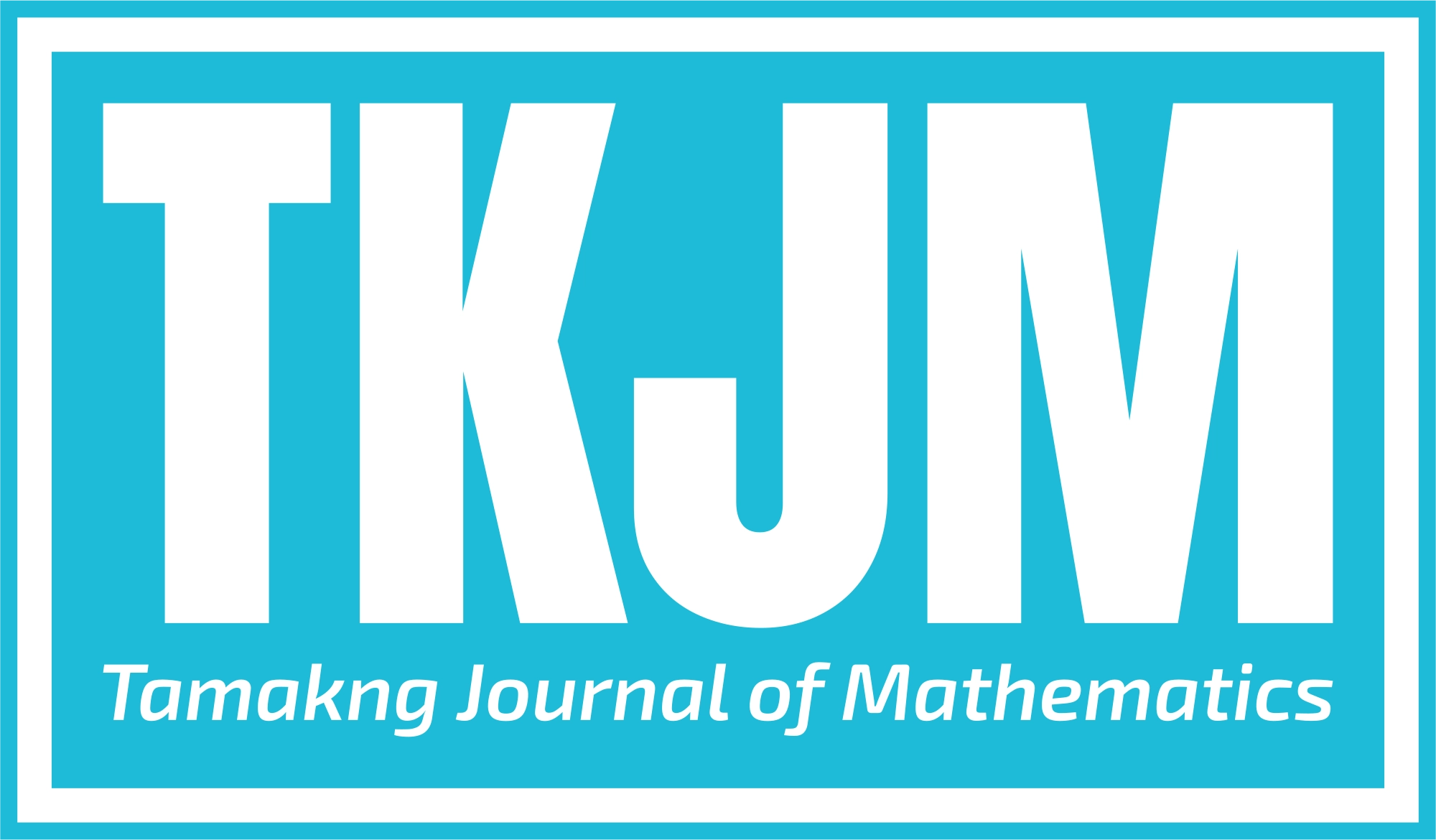Antimagic graph constructions with triangle and three-path unions
Main Article Content
Abstract
Let $G=(V,E)$ be a graph with $p$ edges and let $f$ be a bijective function from $E(G)$ to $\{1,2,\dots ,p\}$.
For any vertex $v$, let $\phi_f(v)$ denote the sum of $f(e)$ over all edges $e$ incident to $v$.
If $\phi_f(v)\not=\phi_f(u)$ holds for any two distinct vertices $u$ and $v$, then $f$ is called an antimagic labelling of $G$.
A graph $G$ is deemed antimagic if it admits such a labelling.
In this study, we investigate the antimagic properties of graph unions, particularly focusing on structures composed of multiple triangles and 3-paths. We employ Skolem sequences and extended Skolem sequences to construct antimagic labelling for these graph unions. Specifically, we demonstrate that for any integer $n\geq 9$, the graph formed by the disjoint union of $m$ copies of the triangle $C_3$ and $n$ copies of the path $P_3$ is antimagic for $m\geq \lceil\frac{n}{3}\rceil$.
Article Details

This work is licensed under a Creative Commons Attribution-NonCommercial-ShareAlike 4.0 International License.
References
N. Alon, G. Kaplan, A. Lev, Y. Roditty and R. Yuster, Dense graphs
are antimagic, Journal of Graph Theory, textbf{47(4)} (2004), 297--309.
J. Abrham and A. Kotzig, Skolem sequences and additive permutations, Discrete
Math. textbf{37} (1981), 143–-146.
H. U. Afzal, A. Alamer and M. Javaid, Computing antimagic labelling of lattically designed symmetric networks, IEEE Access, textbf{10} (2022), 32394--32405.
C. A. Baker, Extended skolem sequences, Journal of Combinatorial Designs, textbf{3(5)} (1995), 363--379.
A. Chavez, P. Le, D. Lin, D. D Liu and M. Shurman,
Antimagic labelling for unions of graphs with many three-paths, Discrete Mathematics, textbf{346(6)} (2023), 113356. https://doi.org/10.1016/j.disc.2023.113356.
F. Chang, Y. C. Liang, Z. Pan and X. Zhu, Antimagic labelling of regular graphs, J. Graph Theory textbf{82} (2016), 339--349.
C. J. Colbourn and J. H. Dinitz, CRC handbook of combinatorial designs, 2nd edition, CRC press, New York, 2006.
K. Deng and Y. Li, Caterpillars with maximum degree 3 are antimagic,
Discrete Mathematics textbf{342(6)} (2019), 1799--1801.
https://doi.org/10.1016/j.disc.2019.02.021
N. Hartsfield and G. Ringel, Pearls in Graph Theory, Academic Press, INC, Boston, 1990.
G. Kaplan, A. Lev and Y. Roditty, On zero-sum partitions and antimagic
trees, Discrete Mathematics textbf{309(8)} (2009), 2010--2014.
https://doi.org/10.1016/j.disc.2008.04.012
X. Ma, A. Kelarev, L. Yuan and K. Wang, A survey on enhanced power graphs of finite groups,
Electronic Journal of Graph Theory and Applications textbf{10(1)}(2022), 89--111. https://doi.org/10.5614/ejgta.2022.10.1.6
T. Skolem, On Certain Distributions of Integers in Pairs with Given Differences, Math.
Scand. textbf{5} (1957), 57--68.
T. M. Wang and C. C. Hsiao, On anti-magic labelling for graph products,
Discrete Mathematics textbf{308(16)} (2008), 3642--3633.
